Many of you have been asking for ideas for rounding games so today I will share some of the games I use with my students to practice rounding.
Game 1 – Round it!
The first two little games are quite simple and they are good for starting to practice rounding the numbers 1-99 to the nearest ten or rounding the numbers 111-999 to the nearest hundred. The students use these printout cards that can be laminated to be used multiple times.
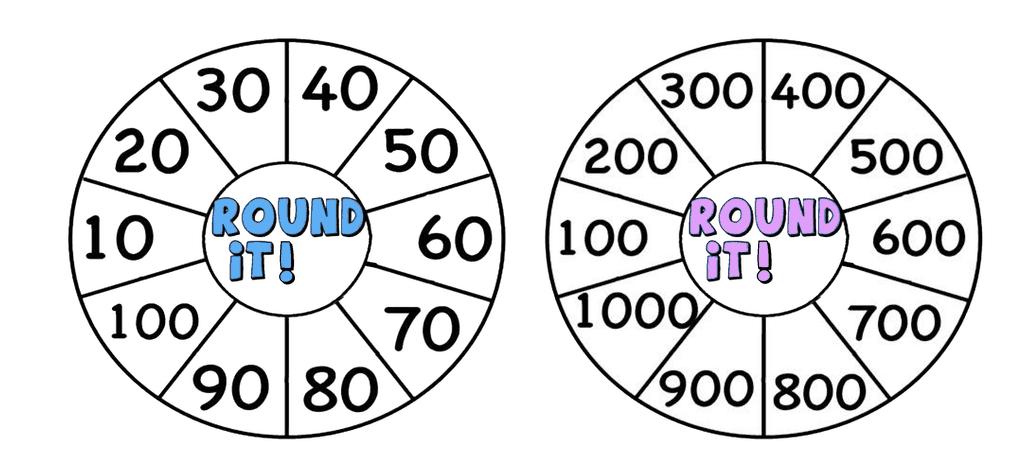
Material:
- 2 or 3 face 10 dice ( Learn how to make your own dice here) or a deck of playing cards or Uno cards.
- Colored pencils, a different color for each player (or whiteboard markers if you laminate the cards)
- printed (and laminated) boards for each player.
WILD ROLL AND WILD CARD
If you are using 10 face dice mark the 0 or 10 on the dice with a marker to turn it into a wild roll (you can put a small sticker on that side) and if you are using cards use all the numbers 1-9 and two jokers from the playing cards deck or the numbers 1-9 and two wild cards from the Uno deck.
The students take a game board each. (same) They take turns rolling 2 dice or picking two cards. Every time they form a number with the digits ( numbers ) they get from the dice or cards. Then they round the number and color/circle the answer on their card if it is available (if it is not previously colored). Then the next player takes their turn. If they get a wild roll on one of the dice or card, they get to choose any digit 1-9 for that roll or card. If they get lucky and get two wild rolls/cards then they choose any number from the board. The first player to color/mark all the numbers on their card wins.
Depending on how long you want the game to last you can decide if the players are free to form any number with the digits they get. For example, if they roll 3 and 5 they can form 35 or 53 depending on which number they need 35 will get them 40 and 53 will get them 50. This allows for a bit of strategy. You can also decide that the first roll is for the tens’ place and the second for the one’s place. (longer game). I play both games with my students starting from the second option and we use two different cups for the dice one for the tens’ place digit and one for one’s place digit.
To play the game of rounding up to 100 you need to roll 3 dice or pick 3 cards.
For a simpler shorter game the players can play on the same board. In that case, the player that marks the most numbers before they run out will be the winner.
Game 2 – Round it – Escape the Maze
Material:
- 2 or 3 face 10 dice ( Learn how to make your own dice here) or a deck of playing cards or Uno cards.
- Colored pencils, a different color for each player (or white board markers if you laminate the cards)
- printed (and laminated) boards for each player.
For the next few games the players will again use the dice or cards in the same way as before, however this time the goal is to color/mark numbers on the board to make a path of touching tiles (horizontally, vertically, or diagonally) to escape the maze. They start on the first number they get that is on the outer side of the maze (grey) and they need to form a path that leads to the opposite side of the maze, on the outer side. The players can also color/mark tiles to block the opponent’s path.

There are different game boards for different levels. Depending on what you want your students to practice you use a different maze printout and a different number of dice or playing cards. For the game boards with 2-digit numbers, you will use 2 dice or pick two cards. For the game boards with 3-digit numbers, you will use 3 dice or pick 3 cards, and for the game boards with 4-digit numbers, you will use 4 dice or pick 4 cards.
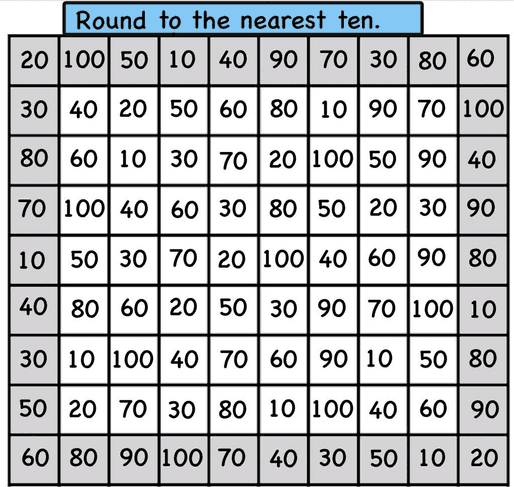
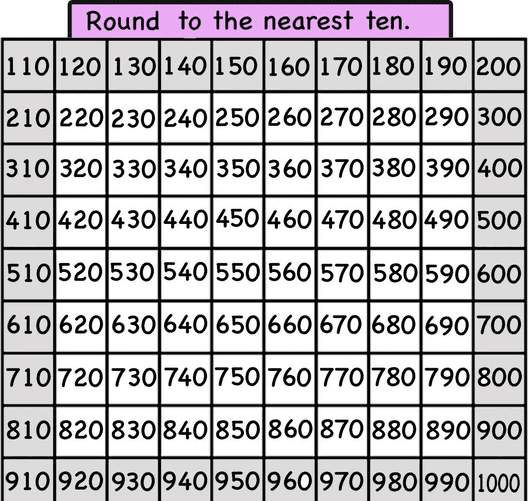
WILD ROLLS OR WILD CARDS
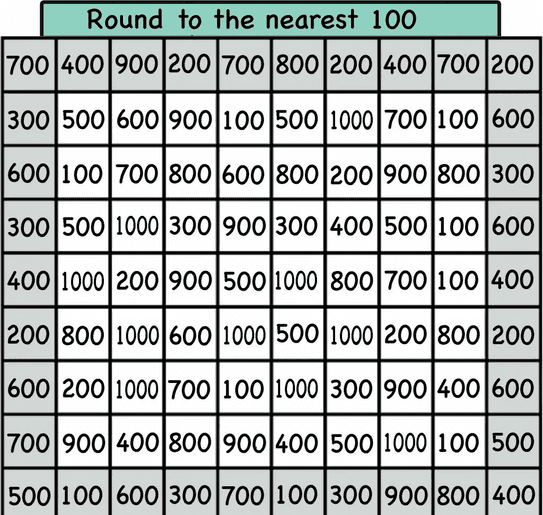
If you are using 10 face dice, mark the 0 or 10 on the dice with a marker to turn it into a wild roll (you can put a small sticker on that side or use a just decide that 0 or 10 are the wild rolls) and if you are using cards use the numbers 1-9 and two jokers from the playing cards or numbers 1-9 and two wild cards from UNO cards. If the player gets a wild roll on one of the dice or card, they get to choose any digit 1-9 for that roll or card. If they get two/three or four wild rolls/cards then they choose any number from the board ( that helps them complete their path)
The players can roll or pick a card specifically for each place value ( I use little bowls for each place value to roll in or a base for each card) or just form a number of their choice with the digits they get. There is much more strategy and a lot of thinking with the second choice, however, the game is much longer and many students get confused with all the choices. It is a good idea to ask the students to write down the numbers they can form and the numbers they round up to.


If you are using the cards you can also have three decks face down one for each place value.
If you want to make the games shorter you can decide that instead of a path the players will try to mark four numbers in a row, column, or diagonal.
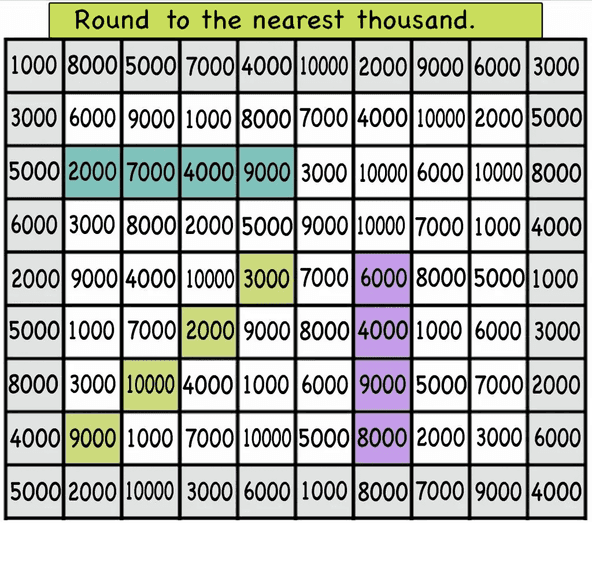
Here are the print game boards to download for free
Virtual-google slides version
The google slides version uses a spinner instead of dice. (the spinner is included in the slides)
Get the google slides version here
Another fun game for rounding is bingo. The students have different cards and the teacher announces a number at a time. This game is good to play with the whole class virtually or in person when you first teach the concept so that you check their understanding by verifying the answers each time. When I play this game I have a student roll two or more dice at a time and I write the number on the board and then we round it together before they mark it on their card. To play the bingo game virtually assign a card to each student.
Here are some bingo cards to practice rounding with your students. There are 24 unique cards for each game.
















